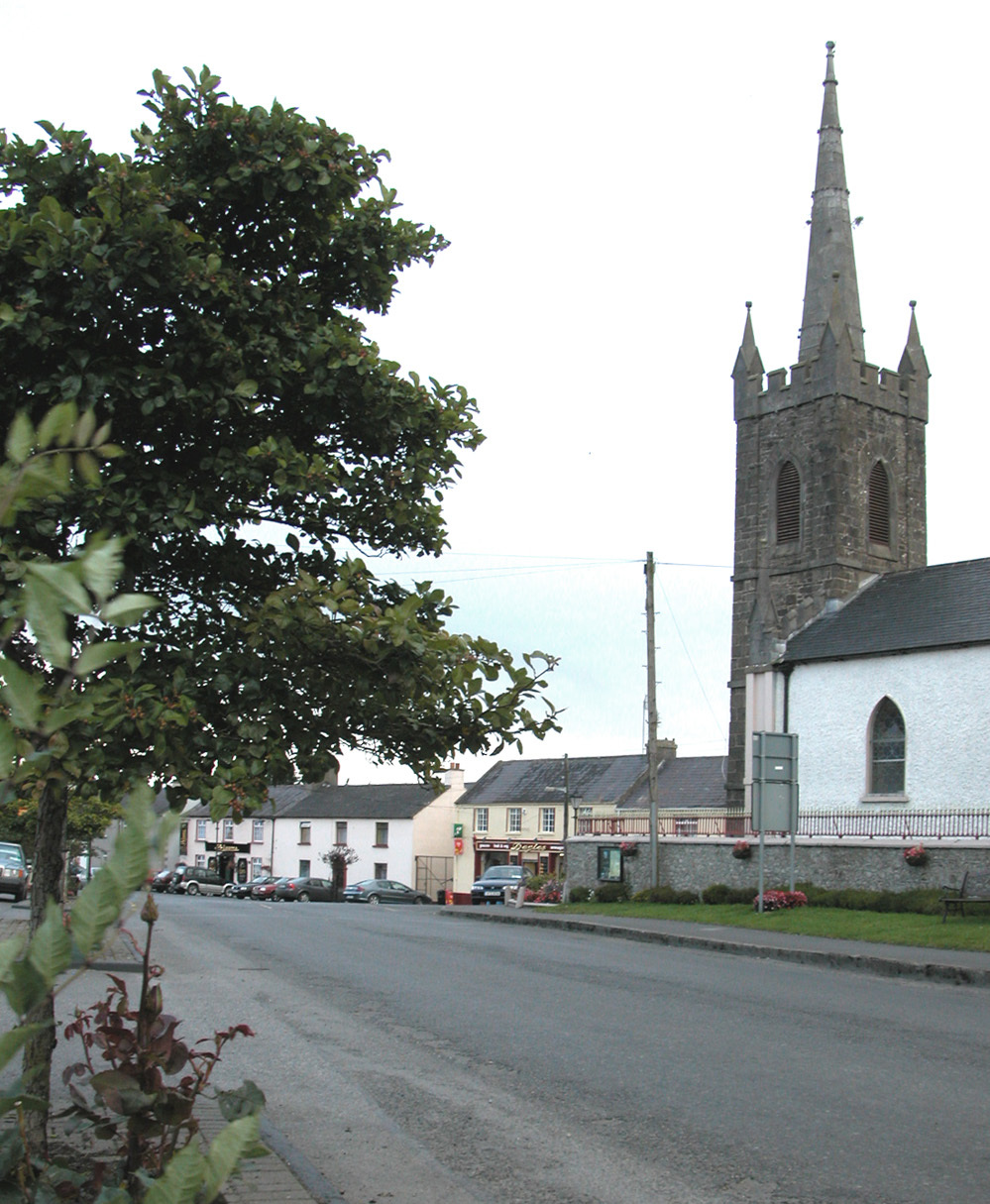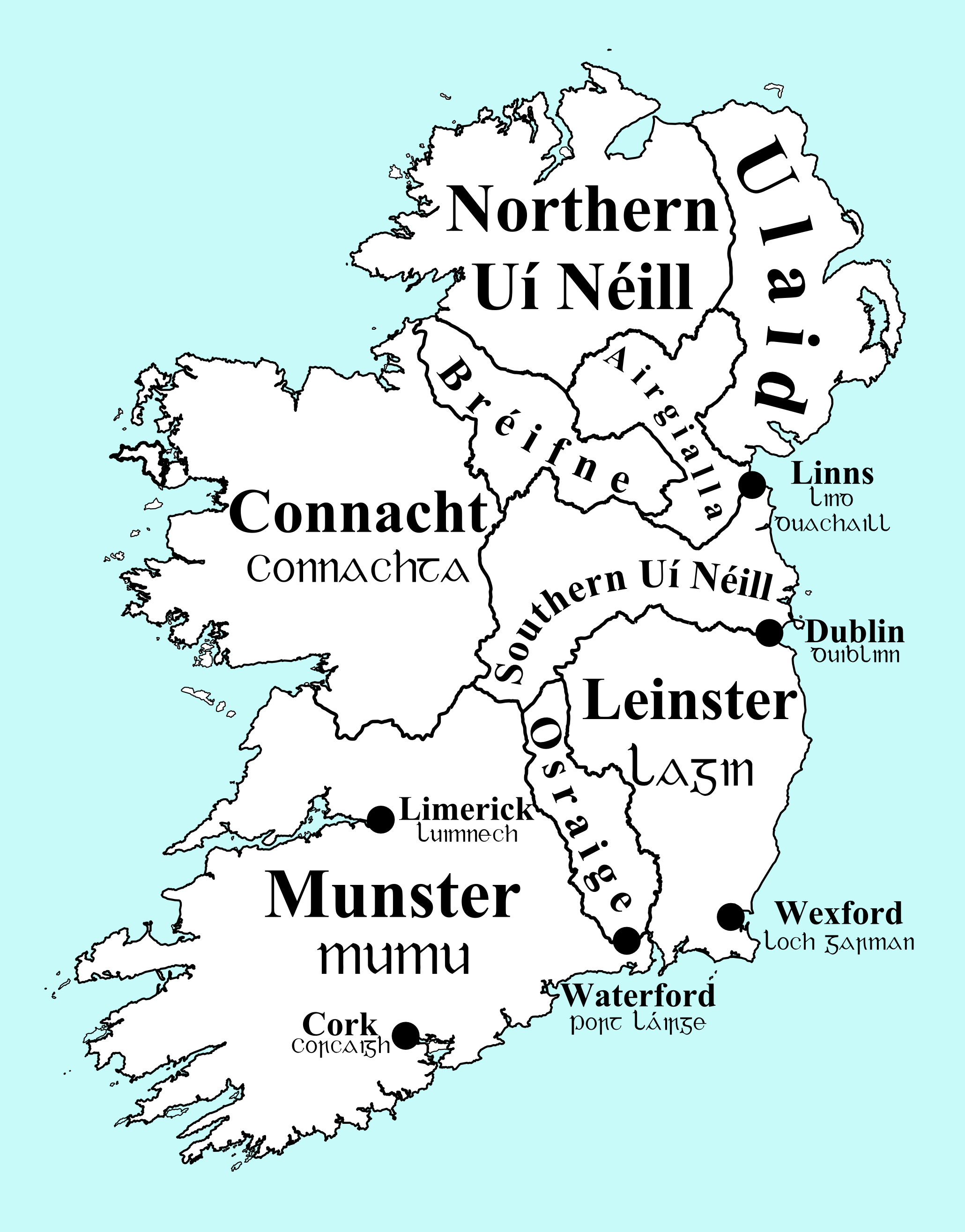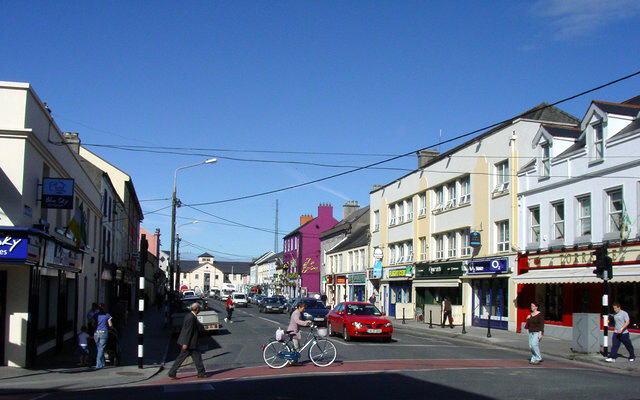|
Clonaslee
Clonaslee () is a village in north County Laois, Ireland, situated in the foothills of the Slieve Bloom Mountains on the R422 Mountmellick to Birr road. Clonaslee is approximately 100 km west of Dublin, and is close to the towns of Portlaoise and Tullamore. As of the 2022 census, the village had a recorded population of 608. Name The primary spelling of the name, Clonaslee, is associated by several sources to the Irish ''Cluain na Slí'' (translated as "pasture of the way" or "roadside meadow" or similar) and related to the village's location on ancient cross-country route. Though this is the commonly and officially accepted version, an alternative spelling of the name, Cloneslieu, is associated by some sources to the Irish ''Cluain na Sléibhe'' (translated as "the mountain meadow"). The original name of the parish, Kilmanman, from the Irish ''Cill na mBanbhán'' or ''Cill Mheanman'' (translated as "the church of Manman"), is associated with Saint Manman who founde ... [...More Info...] [...Related Items...] OR: [Wikipedia] [Google] [Baidu] |
Clonaslee Village 01
Clonaslee () is a village in north County Laois, Ireland, situated in the foothills of the Slieve Bloom Mountains on the R422 Mountmellick to Birr road. Clonaslee is approximately 100 km west of Dublin, and is close to the towns of Portlaoise and Tullamore. As of the 2022 census, the village had a recorded population of 608. Name The primary spelling of the name, Clonaslee, is associated by several sources to the Irish ''Cluain na Slí'' (translated as "pasture of the way" or "roadside meadow" or similar) and related to the village's location on ancient cross-country route. Though this is the commonly and officially accepted version, an alternative spelling of the name, Cloneslieu, is associated by some sources to the Irish ''Cluain na Sléibhe'' (translated as "the mountain meadow"). The original name of the parish, Kilmanman, from the Irish ''Cill na mBanbhán'' or ''Cill Mheanman'' (translated as "the church of Manman"), is associated with Saint Manman who founded a ... [...More Info...] [...Related Items...] OR: [Wikipedia] [Google] [Baidu] |
Clonaslee–St Manman's GAA
Clonaslee St Manman's GAA is a Gaelic Athletic Association hurling and Gaelic football club in the village of Clonaslee, County Laois, Ireland. The club colours are green, white and red (differ between green and white or red and white or sometimes green/red/white depending on whether it is hurling or football. History Clonaslee GAA club catered for football and hurling until 1974, when St Manman's Gaelic Football Club was founded and catered exclusively for football. St Manman's reached the 1977 Laois Junior Football Championships final, losing to Portlaoise. In 2001, Clonaslee Hurling Club amalgamated with St Manman's Football Club. In 1999, Clonaslee–St Manman's amalgamated with Rosenallis forming a Gaels(joint team at senior that allows clubs to have separate junior teams) Senior hurling.They also amalgamated at underage in hurling and football. This team was named Tinnahinch after the barony of Tinnahinch which includes the civil parishes of Kilmanman, Reary and ... [...More Info...] [...Related Items...] OR: [Wikipedia] [Google] [Baidu] |
Gerry Culliton
Gerard Culliton (15 June 1936 – 7 September 2012) was an Irish international rugby union player. A native of Clonaslee in County Laois, he won 19 caps for Ireland, playing in four different positions. Career Culliton was educated at Cistercian College, Roscrea. While at school he played hurling and represented Laois GAA at junior level. He was going to be called up to the Laois senior team, but was invited by a friend to play a rugby match for Tullamore RFC. He played the match under a pseudonym; however, he later received a phone call from the Gaelic Athletic Association (GAA), stating that he had been seen playing rugby and was thus banned from playing Gaelic games under Rule 27, which prohibited any GAA player from playing rugby, football, hockey or cricket at the time. After playing for Tullamore for two years, Culliton moved to Wanderers in Dublin, where he played for seventeen years. He went on to play provincial rugby for Leinster and then received a call-up to t ... [...More Info...] [...Related Items...] OR: [Wikipedia] [Google] [Baidu] |
Mick Dunne
Michael 'Mick' Dunne (27 May 1929 – 11 August 2002) was an Irish sports journalist who pioneered television coverage of Gaelic games. Birth and childhood He was born 27 May 1929 in Clonaslee, County Laois, one of two sons of Francis Dunne, insurance agent, and Agnes Dunne (née Foley), schoolteacher. Educated at Clonaslee national school and Knockbeg College, County Carlow, he went to work in the etchings library of the Irish Press in 1947, becoming Gaelic games correspondent in 1957. Awards He was central to the negotiations with sponsors to set up the annual GAA All Stars Awards which grew out of the Cuchulainn Awards in the 1960s and were established on an annual basis in 1971. He remained its driving force up to the 1990s, and before his death he was honoured with a special award for his work on the scheme. Broadcasting In 1970 he joined RTÉ as the station's first Gaelic games correspondent, developing the ''Gaelic Stadium'' preview programme and after the arrival of ... [...More Info...] [...Related Items...] OR: [Wikipedia] [Google] [Baidu] |
Evelyn Cusack
Evelyn Cusack (born 3 November 1957) is an Irish former meteorologist who served as the Head of Forecasting from 2018 at Met Éireann, where she worked from 1981 until her retirement in 2023. She is the longest-serving weather presenter on RTÉ. Personal life Cusack was born in Clonaslee, County Laois, the middle child of a family of seven. She attended University College Dublin, earning a bachelor's degree in physics and mathematics (1979) and a master's degree in physics (1984). Career Cusack joined the Irish meteorological service Met Éireann in 1981. She was a weather presenter on RTÉ from 1988 until 2018. In 1999, Cusack and other well-known weather presenters such as Gerald Fleming, who were all professional meteorologists, were temporarily let go from their jobs at RTÉ in favour of younger, less qualified presenters. However, after protest from viewers, Cusack and her colleagues were swiftly re-hired. Cusack received the inaugural UCD Alumni award in science in 2014. ... [...More Info...] [...Related Items...] OR: [Wikipedia] [Google] [Baidu] |
County Laois
County Laois ( ; ) is a county in Ireland. It is part of the Eastern and Midland Region and in the province of Leinster. It was known as Queen's County from 1556 to 1922. The modern county takes its name from Loígis, a medieval kingdom. Historically, it has also been known as County Leix. Laois County Council is the local authority for the county, and is based in Portlaoise. At the 2022 census, the population of the county was 91,657, an increase of 56% since the 2002 census. History Prehistoric The first people in Laois were bands of hunters and gatherers who passed through the county about 8,500 years ago. They hunted in the forests that covered Laois and fished in its rivers, gathering nuts and berries to supplement their diets. Next came Ireland's first farmers. These people of the Neolithic period (4000 to 2500 BC) cleared forests and planted crops. Their burial mounds remain in Clonaslee and Cuffsborough. Starting around 2500 BC, the people of the Bronze Age lived ... [...More Info...] [...Related Items...] OR: [Wikipedia] [Google] [Baidu] |
Slieve Bloom Mountains
The Slieve Bloom Mountains (; ) is a mountain range in Ireland. They rise from the central plain of Ireland to a height of . While not very high, they are extensive by local standards. The highest points are Arderin () () at the southwestern end of the range and Baunreaghcong () at the end of the Ridge of Capard. The Slieve Bloom Mountains stretch from near Roscrea in the south west to Rosenallis in the north-west, forming a link between County Laois and County Offaly. Looped walking trails have been developed at six trailheads in the Slieve Blooms, Glenbarrow, Clonaslee, Cadamstown, Kinnitty, Glenafelly Forest Car Park and Glen Monicknew. Walking trails are colour-coded by difficulty. The Slieve Bloom Way can be accessed from any of these trailheads. The Silver River Eco Trail is near Cadamstown. Glenbarrow Falls are located a few miles from Rosenallis. Some walking trails go to the falls and up to the Ridge of Capard. There is a significant population of red grouse in ... [...More Info...] [...Related Items...] OR: [Wikipedia] [Google] [Baidu] |
Republic Of Ireland
Ireland ( ), also known as the Republic of Ireland (), is a country in Northwestern Europe, north-western Europe consisting of 26 of the 32 Counties of Ireland, counties of the island of Ireland, with a population of about 5.4 million. Its capital city, capital and largest city is Dublin, on the eastern side of the island, with a population of over 1.5 million. The sovereign state shares its only land border with Northern Ireland, which is Countries of the United Kingdom, part of the United Kingdom. It is otherwise surrounded by the Atlantic Ocean, with the Celtic Sea to the south, St George's Channel to the south-east and the Irish Sea to the east. It is a Unitary state, unitary, parliamentary republic. The legislature, the , consists of a lower house, ; an upper house, ; and an elected President of Ireland, president () who serves as the largely ceremonial head of state, but with some important powers and duties. The head of government is the (prime minister, ), ... [...More Info...] [...Related Items...] OR: [Wikipedia] [Google] [Baidu] |
Tullamore
Tullamore (; ) is the county town of County Offaly in Republic of Ireland, Ireland. It is on the Grand Canal (Ireland), Grand Canal, in the middle of the county, and is the fourth most populous town in the Midland Region, Ireland, Midlands Region, with 15,598 inhabitants at the 2022 census of Ireland, 2022 census. The town retained Gold Medal status in the National Tidy Town Awards in 2015 and also played host to the World Sheep Dog Trials in 2005, which attracted international interest in the region. The Tullamore Show is held near the town every year. The town's most famous export is Tullamore Dew – an Irish whiskey distilled by Tullamore Distillery – that can be traced back to 1829. The Old Tullamore Distillery, original distillery was shut down in 1954. The brand was later resurrected, but at first was produced at the New Midleton Distillery, Midleton Distillery in County Cork, Cork. However, in 2014, the brand's new owners, William Grant & Sons, invested in a ... [...More Info...] [...Related Items...] OR: [Wikipedia] [Google] [Baidu] |
Gaelic Athletic Association
The Gaelic Athletic Association (GAA; ; CLG) is an Irish international amateur sports, amateur sporting and cultural organisation, focused primarily on promoting indigenous Gaelic games and pastimes, which include the traditional Irish sports of hurling, camogie, Gaelic football, Gaelic handball, and GAA rounders. The association also promotes Irish music and Irish dance, dance, as well as the Irish language and it also promotes environmental stewardship through its Green Clubs initiative. As of 2014, the organisation had over 500,000 members, and declared total revenues of €96.1 million in 2022. The Competitions Control Committee (CCC) of the Gaelic Athletic Association (GAA) governing bodies organise the fixture list of Gaelic games within a GAA county or provincial councils. Gaelic football and hurling are the most popular activities promoted by the organisation, and the most popular sports in the Republic of Ireland in terms of attendance. Gaelic football is also the seco ... [...More Info...] [...Related Items...] OR: [Wikipedia] [Google] [Baidu] |
Coillte
Coillte (; ; meaning /) is a state-owned commercial forestry business in Ireland based in Newtownmountkennedy. Coillte manage approximately 7% of the country’s land, and operates three businesses - their core forestry business, a 'land solutions' division, and a wood panel manufacturing business called 'Medite Smartply'. Operation The company was incorporated in December 1988 and commenced trading in January 1989 when it took over the forestry activities previously carried out by the Department of Agriculture, Food and the Marine. Shares are held by the Minister for Agriculture, Food and the Marine and Minister for Finance on behalf of the Irish Government. During 2016, the organisation had an average of 862 employees. The Coillte estate is 4,450 square kilometres of which 79% is forest; it manages over 50% of forested land in the country. In its 27 years of operation between 1989 and 2016, Coillte had: *Grown its forest and land estate from 396,000 hectares to over 440,0 ... [...More Info...] [...Related Items...] OR: [Wikipedia] [Google] [Baidu] |
Townland
A townland (; Ulster-Scots: ''toonlann'') is a traditional small land division used in Ireland and in the Western Isles of Scotland, typically covering . The townland system is of medieval Gaelic origin, predating the Norman invasion, and most have Irish-derived names. However, some townland names and boundaries come from Norman manors, plantation divisions, or later creations of the Ordnance Survey.Connolly, S. J., ''The Oxford Companion to Irish History, page 577. Oxford University Press, 2002. ''Maxwell, Ian, ''How to Trace Your Irish Ancestors'', page 16. howtobooks, 2009. Townlands cover the whole island of Ireland, and the total number of inhabited townlands in Ireland was 60,679 in 1911. The total number recognised by the Placenames Database of Ireland as of 2014 was 61,098, including uninhabited townlands. Etymology The term "townland" in English is derived from the Old English word ''tūn'', denoting an enclosure. The term describes the smallest unit of land di ... [...More Info...] [...Related Items...] OR: [Wikipedia] [Google] [Baidu] |




